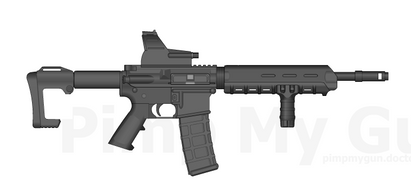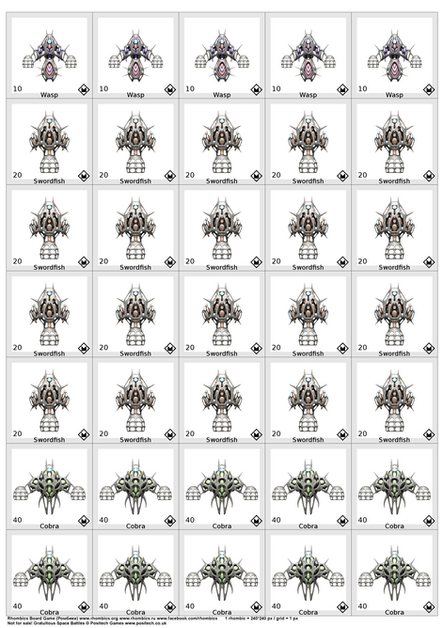HOME | DD
 Smilodon-populator — Armored Section Org Chart for Heavy Gear
Smilodon-populator — Armored Section Org Chart for Heavy Gear

Published: 2012-08-22 18:45:53 +0000 UTC; Views: 5909; Favourites: 31; Downloads: 306
Redirect to original
Description
Organization chart for a fan-revamped look at DP9's Heavy Gear miniatures war game. Created from a real-world functionality standpoint while attempting to remain close to published canon.- Armored formations group heavy battle tanks mounting the most lethal yet practical long-ranged direct fire gun armament and tiered protection into a concentrated formation best used to exploit a breach created by an assault, create their own breach in an enemy formation, or crush a mobile spearhead lighter friendly forces cannot manage. Thus on Terra Nova such regiments tend to be the anvil far more than the hammer, leaving dispersed combat operations for cavalry and motorised forces. Such regiments do however include a number of organic infantry dismounts. Combined with the numerous area-denial vehicles capable of high angle fire armored formations can often function equally well in urban or complex terrain.
However, such formations of large vehicles are quite expensive, difficult to transport, and burn through supplies at several times the rate of other units. Employing such a force can also telegraph a higher command's intentions about a battlefield or locale. Armored regiments are not often assigned to brigades in border or otherwise forward deployed divisions, except during full scale conflict or flag waving (PsyWar & propaganda) operations.
- The primary difference between armored and cavalry forces, as both use fully protected vehicles at all echelons, is that where the latter would typically use chassis types massing from 5 to 25 metric tons the armored regiment will utilize chassis types massing 30 to 50 metric tons. Vehicles of the armored force also differ in having significant passive protection combined with the integrated active/passive self-defense systems needed to survive and fight in a direct fire combat environment.
Both formations however use vehicles with as much systems of all types using compatible components if not (preferably) outright based on variations of the same basic model. While some league factions or city states may deploy wheeled heavy vehicles of equal capability, a regiment will use only one type of suspension system to promote easier logistics.
- HBT(GP)s would be armed with heavy field guns and have moderate speed.
- HBT(AK), breakthrough tanks, would be armed with rail guns or very heavy field guns and have significant speed. However, such quite expensive (and fuel hungry) vehicles could only be procured in small numbers and would be best used in independent companies or small regiments attached at brigade or division level.
- Tanks need dedicated indirect fire support on platform that will allow them to defeat dug-in infantry at ranges beyond the killing radius of hand-held antitank weapons systems.
Squadrons (Cadres) are the basic formation of armored regiments, and are either tank squadrons or mechanized platoons. Tank squadrons are divided into two or three details with a minimum of [3] tanks;
A command detail consisting of one dedicated variant,
A core detail consisting of two to three vehicles; most often this will be a minimum of two GP heavy battle tanks [HBT(GP)], sometimes three, or two tanks and a combat area-denial vehicle [CADV],
An optional specialist detail of two maneuver combat vehicles equipped to enhance the group's mission capability. Typically these will be some form of anti-infantry/Gear platforms based on either HBT(GP)s or HITVs but may also comprise a pair of enhanced light battle tanks [LBT] or assault guns.
Mechanized Platoons are divided into two details with a minimum of [6] transports, based on modified tank chassis without turrets or heavy weapons;
A command detail consisting of two heavy infantry transport vehicles [HITV] carrying the command element and platoon NCO's mortar or HMG support element,
A core detail of four HITVs each carrying a six soldier element with seats for up to two attachments.
Mechanized platoons have no specialist detail. Instead, the vehicles themselves can be altered to carry support equipment as needed such as counter-battery sensors, EW gear, massed counter-measures decoy launchers, or other systems of similar size.
Each squadron or platoon will include one vehicle with a permanent earthmoving blade, which can double as armor reinforcement for point/breaching usage, and may also have another vehicle with either a similar blade or a mine plough. The widespread dissemination of such basic equipment allows greater independence from dedicated engineer vehicles that may be in short supply or too far away to provide support.
Tank Squadron totals;
Armored Vehicles: 6 maximum, 3 minimum.
Crew: 9 to 24
Infantry: none
Mechanized Platoon totals;
Armored Vehicles: 6 maximum, 6 minimum.
Crew: 12 to 18
Infantry: 36 to 48
Sections are a powerful combat force in their own right as they may include upwards of two dozen armored vehicles at full strength, and are comprised of;
[1 or 2] tank squadrons (cadres) with or without specialist details,
[1 or 2] mechanized platoons complete with infantry,
A command group with a command detail consisting of the section commander's and deputy commander's tanks, a support detail consisting of a field maintenance & recovery vehicle, munitions supply vehicle with cargo trailer, and a fuel tanker with fuel trailer. The command group specialist detail, if any, is most commonly a pair of engineer combat vehicles from the company command section which can include dry-gap/wall obstacle crossing types able to also serve as a hasty roadway or types with recoverable vehicle launched bridges of two to three bays.
Heavy work and logistics equipment organic to the section includes;
Stabilizing blade, earthmoving blade, heavy duty winch(es) (may include rocket grapples), and extendable boom crane arm with bucket (plus auger attachment or hydraulic spike) on the recovery vehicle,
Collapsing boom crane with forklift or tines on the ammunition carrier (capable of loading & unloading turret bustle unitary ammo packs from the tanks),
Load handling equipment arm on the ammunition and fuel vehicles with their associated trailer(s) to load/offload palletized carriers,
The earthmoving blades and/or mine ploughs of each squadron/platoon.
While each squadron may have a specialist detail organic to the section, or some other form of attachment, a command group will rarely be assigned a specialist detail from a higher level of command unless it consists of three full combat groups.
One section per company will possess only a single tank squadron but field [2] mechanized platoons, and thus with the company command section's mechanized support platoon an armored company will include a complete infantry company organic to the formation. (Although the regiment as a whole will include barely a full infantry battalion of dismounts.)
Tank Section totals;
Armored Vehicles: 25 maximum, 11 minimum.
Crew: 27 to 100
Infantry: 36 to 48
Mechanized Section totals;
Armored Vehicles: 25 maximum, 8 minimum.
Crew: 18 to 94
Infantry: 72 to 96
Companies xxx
[2] tank sections,
[1] mechanized section,
A command section - Command group (command detail, support detail, area-denial specialist vehicles), engineer squadron, logistics squadron, mechanized platoon (the support/command platoon of the infantry company), and a scout platoon.
xxx
Regiments xxx
[3 to 6] armored companies,
A cavalry reconaissance company,
An artillery company,
A logistics company [3x sections of 16+ with a minimum of; six fuel, four ammo, two rescue, two maintenance, and two water/food variants.] plus water purification/drilling rig vehicles.
A command section.
*A reinforcement/labor group.
xxx
Although Southern faction vehicles are featured here, most Northern factions would use a similar structure filled out with their own particular vehicle models.
Heavy Gear & images are copyrights of DP9.
Some images use IRL modern day versions, due to the fact their equivalents do not as yet exist in the HG universe setting.




















